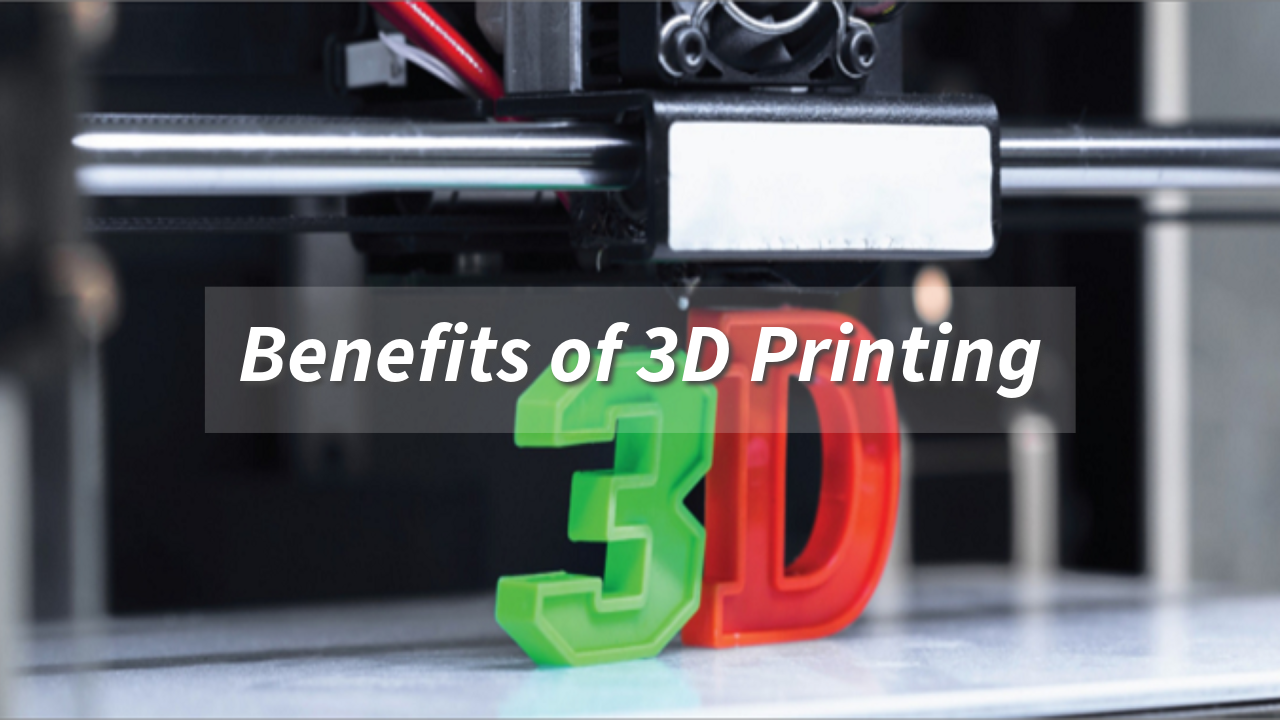What Are the Benefits of 3D Printing?

Discover the top benefits of 3D printing, from cost efficiency and customization to sustainability.
Introduction
3D printing, also known as additive manufacturing, is revolutionizing various sectors by enabling the creation of three-dimensional objects from digital designs.
This technology is gaining traction in industries such as manufacturing, healthcare, and education, thanks to its ability to produce complex designs quickly and at a lower cost. Its versatility allows businesses to innovate rapidly, while hobbyists enjoy the accessibility of creating customized products at home.
What Is 3D Printing?
3D printing is a process that involves creating a physical object from a digital model by layering material. This technology allows for intricate designs that would be challenging or impossible to achieve with traditional manufacturing methods. Key types of 3D printing technologies include:
Fused Deposition Modeling (FDM): Widely used for prototyping, FDM uses thermoplastic filaments that are heated and extruded to build layers.
Stereolithography (SLA): Utilizing a laser to cure liquid resin into hardened plastic, SLA is ideal for creating highly detailed models.
Selective Laser Sintering (SLS): This technology fuses powdered materials with a laser, making it suitable for complex geometries and functional parts.
Each of these technologies serves different needs, making 3D printing a flexible option for various applications.
Top Benefits of 3D Printing
Benefit | Explanation |
|---|---|
Cost Efficiency | Reduces waste and material costs, allowing for cheaper production runs. |
Customization | Enables the creation of bespoke products tailored to individual requirements. |
Speed | Accelerates prototyping and production timelines, facilitating faster innovation. |
Complexity | Allows for the creation of intricate designs that traditional methods can't achieve. |
Sustainability | Reduces material waste and energy consumption compared to conventional manufacturing. |
Accessibility | Makes manufacturing capabilities available to small businesses and hobbyists. |

Real-World Applications of 3D Printing
Healthcare: In the healthcare sector, 3D printing is transforming prosthetics by creating custom-fit devices that improve patient comfort and functionality. For example, companies are now producing personalized prosthetic limbs that enhance the quality of life for amputees.
Automotive: The automotive industry uses 3D printing for custom parts and prototypes, allowing for rapid testing and modification. For instance, manufacturers can create specialized components that optimize performance without the need for large production runs.
Education: In educational settings, 3D printing provides hands-on learning tools that enhance STEM education. Students can design and produce models, promoting creativity and practical understanding of complex concepts.
Architecture: Architects utilize 3D printing to create detailed scale models of buildings, facilitating visualization and presentation to clients. This technology allows for quick adjustments to designs, saving time and resources during the planning phase.
Challenges of 3D Printing
Despite its numerous advantages, 3D printing does face some challenges:
Material Limitations: The range of materials suitable for 3D printing is still developing, which can restrict applications.
Slower Mass Production: While 3D printing is efficient for small runs, it may not be the fastest option for large-scale manufacturing compared to traditional methods.
Upfront Costs: Initial investment in 3D printing technology and materials can be significant, posing a barrier for some businesses.
Conclusion
3D printing is fundamentally transforming production processes, enhancing efficiency, sustainability, and personalization. As industries continue to adopt this technology, its potential to innovate and create tailored solutions is becoming increasingly evident. Whether for business applications or personal projects, 3D printing offers exciting opportunities for creativity and efficiency.
AutofabX: Your Go-To 3D Printing Service
Unlock the potential of your ideas with AutofabX! Our state-of-the-art 3D printing services provide rapid prototyping and custom solutions tailored to your needs.
From intricate designs to functional prototypes, we’re here to help bring your vision to life. Contact us today to discover how AutofabX can elevate your projects!

FAQs
How does 3D printing benefit students?
3D printing offers students hands-on experience in design, engineering, and problem-solving. It allows them to bring ideas to life, visualize complex concepts, and prototype projects quickly.
By creating physical models, students gain a deeper understanding of STEM subjects, develop creative and critical thinking skills, and learn about real-world manufacturing processes.
What are advantages and disadvantages of 3D printing?
Advantages: Customization, rapid prototyping, reduced material waste, and accessibility to complex designs.Disadvantages: Limited material options, slower production for large quantities, and potential for reduced durability compared to traditional manufacturing.
Is 3D printing eco-friendly?
3D printing has eco-friendly potential, especially when compared to traditional manufacturing that wastes excess material. By using only the necessary amount of material for each print, it minimizes waste. Additionally, certain 3D printing filaments are recyclable or derived from renewable sources.
However, it does consume a significant amount of energy, and not all materials are biodegradable. The eco-friendliness of 3D printing depends largely on the type of material used and the energy sources that power the machines.
How does 3D printing help the world?
3D printing aids various fields, including healthcare, construction, and education. In healthcare, it has led to innovations such as custom prosthetics, implants, and even bioprinting tissues. In construction, it offers rapid, affordable housing solutions. Education benefits from interactive learning, while disaster relief organizations use 3D printing to produce on-demand supplies. Overall, 3D printing can drive innovation, reduce costs, and provide sustainable solutions for global challenges.
Is 3D printing good for the economy?
3D printing positively impacts the economy by fostering innovation, reducing production costs, and enabling local manufacturing. It allows startups and small businesses to prototype and produce items without needing expensive, large-scale infrastructure. Additionally, 3D printing encourages the development of high-skilled jobs in technology, design, and engineering.
However, the potential for job displacement in traditional manufacturing sectors remains a concern.